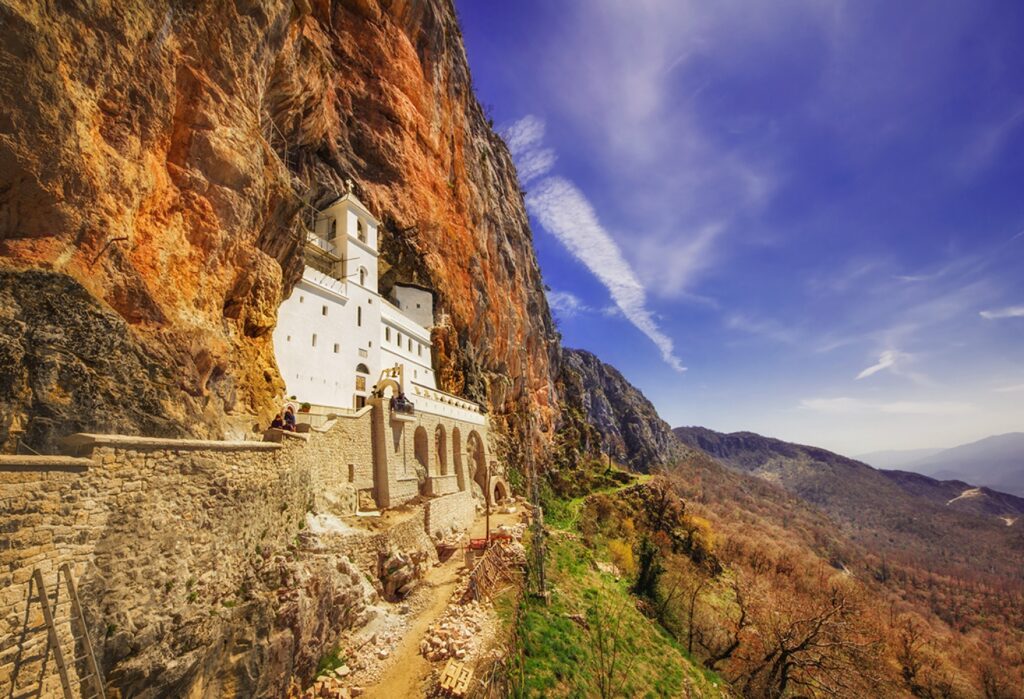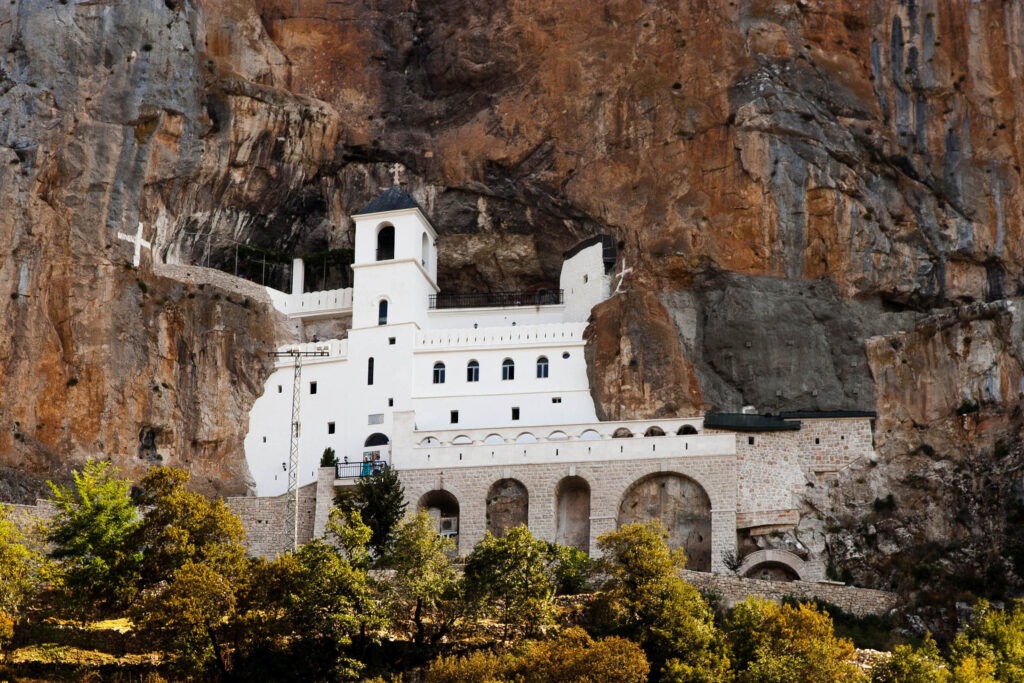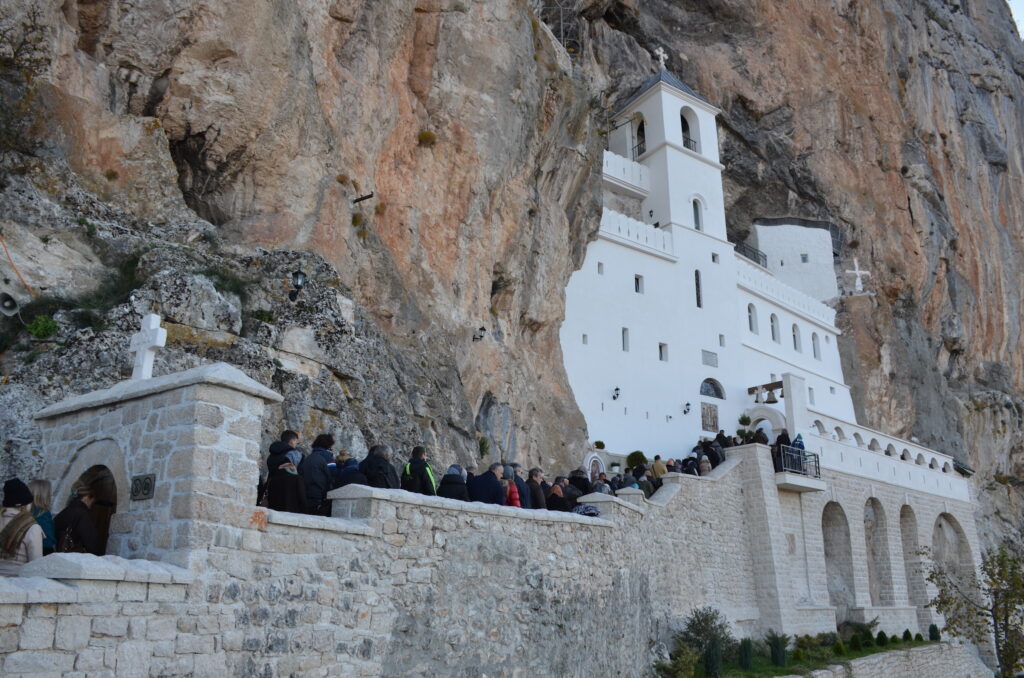The Majestic Heights: Ostrog Monastery's Unique Location
Nestled within the rugged mountains of Montenegro, the Ostrog Monastery stands as a testament to human willpower and faith. Its impressive structure, etched against the backdrop of sheer vertical cliffs, often leaves visitors in awe. This awe isn’t just due to its architectural prowess, but also its symbolic representation of spiritual ascension. Located over 900 meters above the Zeta valley, the monastery’s positioning seems almost miraculous, offering unparalleled panoramic views of the surrounding landscapes.
The journey to Ostrog Monastery is in itself a pilgrimage. The winding paths that lead to its entrance serve as a metaphorical ascent towards divine communion. As devotees and curious visitors alike make their way up, there’s a tangible sense of leaving the mundane world behind. The pristine air, the serene ambiance, and the almost ethereal quality of light add to the monastery’s spiritual allure.
Legend recounts that its strategic location was chosen to bring worshippers closer to the heavens. Over time, this location also allowed it to serve as a beacon of hope, a guiding light visible from distant lands. Ostrog Monastery, with its gravity-defying architecture and its elevated position, remains an emblem of spiritual resilience and divine grace.

History Etched in Stone: The Origins and Evolution of Ostrog Monastery
Ostrog’s history is as captivating as its location. Founded in the 17th century under the vision of Metropolitan Bishop Vasilije of Herzegovina, the monastery was established to be a bastion of Orthodox Christian faith. Vasilije’s ambition wasn’t just to build a religious structure, but to craft a sanctuary that resonated with peace, spirituality, and timeless wisdom.
The monastery stands as a monument to Saint Basil of Ostrog, a revered figure synonymous with miracles and divine healing. His aura still permeates the monastery, with believers holding onto the age-old legend that his mortal remains, safeguarded within, continue to bring blessings and solace to those who seek them. This has made Ostrog a magnetic pilgrimage site, drawing in Orthodox Christians from different corners of the world.
Over the centuries, Ostrog Monastery has witnessed the ebb and flow of empires, the tumult of wars, and the relentless march of time. Yet, through all these external changes, it has remained steadfast, offering refuge to those seeking shelter from Ottoman invasions and providing spiritual guidance to generations. Its walls, rich with frescoes and religious art, chronicle tales of valor, sacrifice, and the undying human spirit. Today, as visitors traverse its corridors, they are not just walking through a historical monument, but are also journeying through time, revisiting epochs that have shaped Montenegro’s cultural and spiritual fabric.

Architectural Wonders and Sacred Art of Ostrog Monastery
Ostrog Monastery isn’t just an embodiment of spiritual reverence but also an architectural marvel. Built directly into the mountainside, it’s a structure that challenges the very laws of construction. The main church, almost as if it was sculpted by nature herself, harmoniously marries the cliff’s rock with human craftsmanship. This blend creates an impression of the monastery being an organic extension of the mountains, forged by divine hands.
As you step inside, the dimly lit interiors reveal walls adorned with vibrant frescoes, each narrating tales from the scriptures or celebrating the lives of saints. Every brushstroke exudes a passion, a dedication, capturing moments of divine interventions and miracles. Over the centuries, these artworks have been both witnesses to countless prayers and a source of solace to many.
The icons within the monastery, meticulously crafted and sometimes embedded with semi-precious stones, resonate with spiritual significance. Some of these icons, revered for their believed miraculous powers, are often surrounded by devotees offering prayers, lighting candles, or just soaking in their ethereal beauty. Ostrog, in its essence, is a treasure trove of sacred art, a place where every corner, every niche, celebrates the union of artistry and faith.

Ostrog Monastery Today: A Meeting Point of Tradition and Modernity
As times changed, so did the world around Ostrog Monastery, but its core essence has remained intact. Today, it’s not just a secluded sanctuary of faith, but also a crossroads where ancient traditions meet the 21st century. Every year, thousands, irrespective of their religious affiliations, are drawn towards Ostrog. Some come in search of spiritual enlightenment, some out of sheer curiosity, while others are lured by its historical and architectural grandeur.
In recognizing the needs of the modern world, the monastery has incorporated facilities to accommodate the influx of global pilgrims and tourists. However, these amenities haven’t compromised the historical or spiritual integrity of Ostrog. Instead, they ensure that every visitor, regardless of their purpose, leaves with a fulfilling experience.
Beyond its walls, Ostrog continues to play a pivotal role in the cultural and religious fabric of Montenegro. Seminars, workshops, and lectures, ranging from ancient iconography to discussions on contemporary spiritualism, are held here, making it a vibrant hub of learning and dialogue. In these modern times, Ostrog Monastery stands tall as a bridge connecting past legacies with future aspirations, all the while remaining a beacon of spiritual light and hope.

